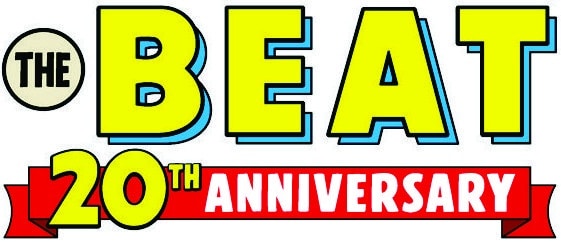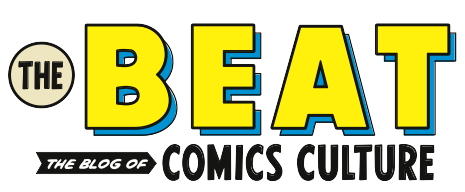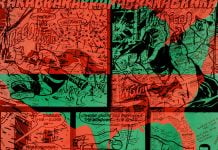Via Vertigo: Graphic Content. Click for a larger version.
Share this:
- Click to share on Facebook (Opens in new window) Facebook
- Click to share on X (Opens in new window) X
- Click to share on Mastodon (Opens in new window) Mastodon
- Click to share on LinkedIn (Opens in new window) LinkedIn
- Click to share on Tumblr (Opens in new window) Tumblr
- Click to share on Reddit (Opens in new window) Reddit
- Click to print (Opens in new window) Print
- Click to email a link to a friend (Opens in new window) Email












This is so beautiful. This is why comics will always be where it’s at.
Ya’ can’t get that on your cell phone.
Five covers aren’t a “Triptych”, are they?
-B
A “quintych”?
A most gorgeous image. Poster, DC, please?
Cheers,
B
It’s a polyptych — specifically, a pentaptych. “Penta” rather than “quinti” because it uses Greek roots rather than Latin.
diptych
triptych
tetraptych
pentaptych
hexaptych
heptaptych
octaptych
And aside from what kind of ptych it is, it’s gorgeous. The interiors, too — I’ve only seen the first issue so far, but Kaluta’s art is better than ever.
kdb
An art blogger has three Kaluta covers from the 1978 series DOORWAY TO NIGHTMARE, in which Madame Xanadu first appeared. The covers can be clicked on to see larger versions.
SRS
F***in’ Busiek knows everything. Must be why he always win. :)
Nice to see Kaluta kicking ass. Bravo, Mike!
Village Comics down on Sullivan St. in NYC had one of Mike’s B&W Statstruck posters hanging on the wall for a year or so– I’d go and admire it and planned to buy it eventually– when I went back to get it, somebody else got it first.
Miss that place– it’s an Apt. Broker’s office now, bland and sterile like a dentist’s office.
Mr. Busiek is correct, although he forgot to mention the fractional values, used to describe details of larger works. For example… those cute Raphaelic angels you see on coffee mugs and calendars? That is a deciptych. One measures the area of the detail against the area of the original work. While Base-10 notation is the most common system, any whole number can be used (such as the Base-9 system used to analyze Watchmen). Some have experimented with irrational numbers, reverse engineering comics which use square roots, pi, psi, and Euler’s number. (This was inspired by the use of logarithms, which is simply a different way of looking at exponentials.)
Oh… cool looking covers. The recent Radioactive Man crossover was cool, too, actually told a story across three covers!
Kaluta is the best!